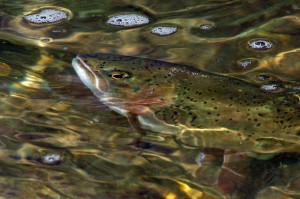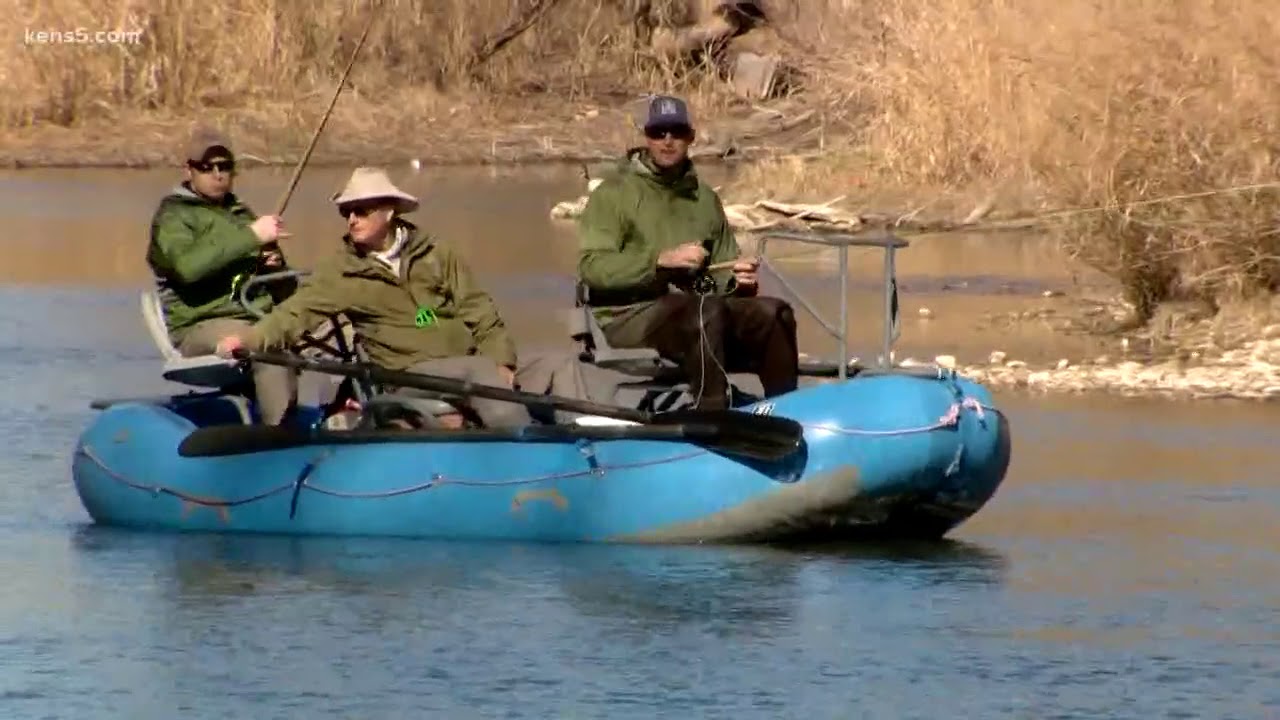As you have worked to develop your fly fishing skills you have learned a great many things. Some of these fly fishing basics include proper casting techniques, choosing the right fly, working on your presentation of that fly and reading the water for suitable fish habitats. One of the most basic skills a fly fisherman must develop in order to be consistently successful is the ability to recognize fish feeding signs.
 Your odds of catching fish will drastically improve if you locate fish that are feeding. The reason behind this is simple- feeding fish are more likely to attempt to eat your artificial fly! Not only do you have to be able to recognize when fish are feeding, you also must learn to distinguish where in the water they are feeding and what specifically they are eating.
Your odds of catching fish will drastically improve if you locate fish that are feeding. The reason behind this is simple- feeding fish are more likely to attempt to eat your artificial fly! Not only do you have to be able to recognize when fish are feeding, you also must learn to distinguish where in the water they are feeding and what specifically they are eating.
Let’s say that you can see movement on the surface of the stream, which tells you that the trout are actively feeding. You throw on a floating fly and present it perfectly to them, but they fail to take it. Why would the fish continue eating all around your fly but avoid taking it? The probable answer is because you are not recognizing where and what they are targeting. These skills are definitely fly fishing basics that you should take the time to learn!
To be able to see feeding behavior you must have the proper equipment. You will need a hat to block the sun’s glare and polarized sunglasses to see through the water. The first step is to find a nice hidden spot with a good view of the water and observe the behavior of the feeding fish for several minutes. Watch for repeating patterns.
Try to determine how often the fish are presenting a specific type of feeding behavior. Look for specific signs that tell you what they are eating and where they are feeding. Only after you have spent some time determining these factors should you attempt to throw an artificial. Here are some signs to look for.
The typical fish rise with bubble indicates that the fish is eating off the surface of the water. This is sometimes called ‘boiling’ and it creates the classic rings surrounding the exact spot where the fish is feeding. This is an amazing sight to see and it means that you will have a good chance at some dry fly surface fishing action. Watch for consistent patterns and try to throw a fly within those patterns.
If you happen to only see a trout’s tail at the surface of the water, that means that the fish is nose down at the river’s bottom, probably digging out nymphs, scuds or other larvae. Aggressive tail action may mean that they are pulling snails off of the rocks. This situation can be tricky to fish, but try going underwater with a nymph, scud or worm artificial.
Very often fish are feeding neither at the water’s surface nor at the bottom, but instead are eating in the zone between. There are several signs that advertise that fish are eating emergers, wounded insects or other prey in the mid-level water column. Look for small swirls or whirlpools just below the surface. This is a fish moving and changing direction to feed just under the water’s surface. Also look for the typical ‘boiling’ rise but without bubbles.
The sip is another sign that a fish is eating an emerger just below the surface tension of the water. The sip is when the fish’s mouth slowly comes up and sips the insect in, usually without breaking the water tension. Very often you can hear this sip. Throw a crippled spinner or an emerger pattern without a lot of hackle to catch fish feeding in this manner.
Finally there is the porpoise sign. This is when you see just the back of the fish break the water, rather than its head and mouth. This means that the fish is swimming up from below, then eating something and turning to head downward before it reaches the surface. Again, crippled spinners and emerger patterns will probably work well in this situation.
There are also signs that fish are aggressively feeding on something. Splashes, bow waves and fish leaping out of the water should tell you that the fish are aggressively feeding on some fast moving prey. This prey could be quick insects, flying insects or baitfish. Watch carefully and figure out what they are hunting, then mimic the prey and its quick, evasive movements and you will get plenty of hits.
Be aware of inspecting behavior as well. Inspecting is when the fish are not actually feeding, but are carefully and cautiously inspecting potential food items. If the fish are approaching your fly, looking at it and then slowing backing away from it- then you are spooking them with the wrong artificial. Wait a good period of time and present them with something else.
By learning how to recognize the various feeding signs of fish you will have a much better chance of being able to present them an artificial that will fool them into eating it. This process takes practice and time, as well as a little experimentation. The better you can get at recognizing specific feeding patterns- the more fish you will catch!

